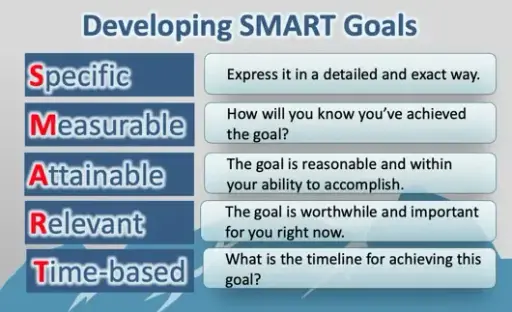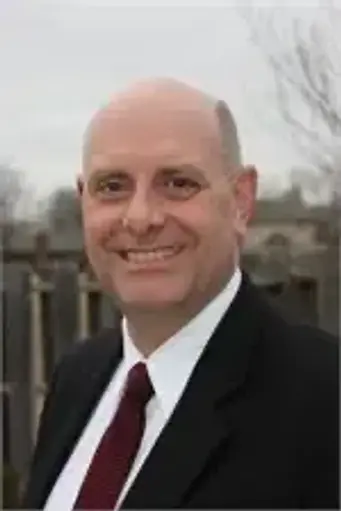
Written By: Tony Ryff
December 18, 2020
 Christmas is almost here, and in order to accomplish all the decorating, cooking, shopping, wrapping, etc. (the list of “to do” items keeps growing), you have to set specific goals for yourself to accomplish everything that needs to be done. The reward you are looking forward to after you have accomplished all your holiday goals is to pick up a good book or simply rest before the new year starts. Let’s spend a few minutes together centering on the power and benefits of goal setting – especially as it relates to the students with whom we work!
Christmas is almost here, and in order to accomplish all the decorating, cooking, shopping, wrapping, etc. (the list of “to do” items keeps growing), you have to set specific goals for yourself to accomplish everything that needs to be done. The reward you are looking forward to after you have accomplished all your holiday goals is to pick up a good book or simply rest before the new year starts. Let’s spend a few minutes together centering on the power and benefits of goal setting – especially as it relates to the students with whom we work!
Why is it that students with learning differences struggle with goal setting? In the world of school and academics, many students experience success in achieving the goals that they have set for themselves. Can we identify a common set of factors that make goal setting such a challenge for struggling students? The answer is found in looking at executive functioning skills and the lack of those skills being well-developed. Executive functioning refers to a series of mental skills such as planning, sustained attention, metacognition, self-regulation, awareness of self-change, and organization. These skills are developed gradually in the frontal lobe of the brain and are an essential aspect of maturing as a learner. Because setting and attaining goals is dependent on these mental skills, students with deficits in executive functioning often struggle in being able to move themselves forward in their learning like other learners can do.
We were designed to be forward thinking individuals, and the rationale/benefit of goal setting is quite clear. Building a sense of responsibility by having the student assume ownership of his learning is critical. Goal setting fosters growth by addressing these areas:
- Improves decision-making skills
- Promotes internal and external organizational skills
- Provides opportunity for success
- Increases self-awareness
- Boosts self-confidence
- Helps ground the student in reality instead of wishful thinking
Students need to experience success in small ways to serve as a catalyst for attempting larger challenges. Setting realistic goals and subsequently achieving them builds strong neural pathways for further growth.
Developing a Growth Mindset
Do you have students that give up at the drop of a hat? Do they avoid hard work thinking that it will go away (out of sight, out of mind-avoidance)? Do you have students who “trash talk” on themselves through false messages such as, “I am not smart,” “I can’t do that,” This is too hard for me,” and “I am never going to be able to accomplish anything?” The prerequisite for setting goals is to have a growth mindset. It all starts with attitude. So, what is a growth mindset vs. a fixed mindset? A growth mindset says you can improve when you dedicate time and strategies to become better at something. Conversely, a fixed mindset accepts yields to the assumption that intelligence and ability are static and that the learner cannot (or will not) change.
The power behind a growth mindset is that a person can grow and change (brain plasticity). It is the belief that with targeted effort and perseverance, it is possible to increase intelligence, talents, and abilities. Goal setting can trigger new behaviors which help guide the brain’s assumptions and to focus/sustain momentum forward. There is an excellent YouTube video on growth mindset that you and your student can watch together in just seven minutes: Mindset by Carol Dweck

Because a growth mindset sets the stage for meaningful goal setting, here are some tangible ways to build a growth mindset in your students:
- Discuss the way a person with a fixed mindset thinks compared to a person with a growth mindset thinks. Show your student the above chart and dive into a grand conversation.
- Choose reading for the student in his therapy session from books about men and women of character who faced great challenges and overcame them. Think of Helen Keller, Booker T. Washington, Hudson Taylor, etc.
- Take time (it takes time) to discuss the vocabulary around a growth mindset.
- Talk about self-efficacy – a person’s belief that he/she can successfully achieve an academic task or attain a desired goal.
Principles About Goal Setting
OK – you know the importance of goal setting that stems from a growth mindset. Is there a right way to jump in and facilitate the development of meaningful goals? Think about these general principles about goal setting:
Children must be taught to handle setbacks and failure.
Instead of the cultural mandate to pave the way for children by removing all obstacles in their path, encourage parents to allow their child to work through the struggle, to persevere, to overcome. The learner’s immaturity (think executive functioning skills) necessitates active and intentional support and guidance on the part of all the child’s “stakeholders.”
Setting goals triggers new behaviors and momentum.
Goals are the roadmap of where the student is going and how he is going to get there. Starting with small, short-term goals and gradually expanding them builds habits and a growth mindset that gives the student traction for the next challenge.
Goals should be focused on the process, not the end.
We tend to set end-state goals when what is really needed are process-focused goals. Here’s an example that may resonate with you: Let’s say that your goal is: “I want to lose 15 pounds in two months.” That sounds like an admirable goal – an end-state goal. Does that mean that after you lose the weight you plan to gain it right back because you met that initial goal? No! Therefore, to lose the weight, you need to focus on the process – eat healthy, exercise or be more active, practice portion control, etc. These are process changes that enable you to celebrate the achievement. Let’s look at another example from school. What if the goal is, “My goal is to pass Algebra 1.” To actually reach that achievement, you need to focus on the process or the steps/plans to get there. To pass the class, you must ask the teacher for help, turn in every assignment, be attentive in class, etc. The natural result of achieving these process goals will be a passing grade in Algebra.
For lasting change, the student must be the initiator in setting goals for himself.
You can’t want change for the student more than he wants it for himself. Goal setting is essential for self-motivation. He needs to give meaning to his actions with the end purpose of achieving something that is greater than he is today. He needs to know where he wants to go, not where the teacher or parent force him to go. If he doesn’t want it, setting goals will be ineffective.
Forming new habits (new thinking) takes time and perseverance.
You must start small and build on the synergy that comes from achieving small goals. For example, a goal in reading would start small with reading for two minutes, then ten minutes, then thirty minutes, then a whole chapter, etc. Big goals encompass smaller goals. How do you eat an elephant? One bite at a time!
Set the goal. Meet the goal. CELEBRATE the results!
Let me say a word here about intrinsic vs. extrinsic motivation. The reward/treat is not the goal. The reward is the celebration that you have achieved the stated goal. The focus should be directed towards the sense of fulfillment that we, as adults, experience – the feeling of satisfaction and accomplishment is the reward, not a piece of candy or a sticker. The joy that comes from accomplishing a process-oriented goal propels one to strive for the next goal.
Distractions, temptations, and avoidance, oh my!
How quickly the brain distracts itself from the task or goal at hand. This is where executive functioning is critical. The student has to learn to monitor his own thinking and actions. Build routines that minimize the temptation (the cell phone is now not in the room while he is studying) or avoidance tactics.
Developing Efficacious Goals
Perhaps the easiest model for developing goals is to use the SMART goal format. The model below provides an explanation of SMART goals that you can talk through with your student.

Here’s an example of a SMART goal with a detailed description of each element:
SMART Goal: I will keep my locker clean and organized throughout the semester as a sign of respect for myself and to save time.
Specific: I will use locker organizers and an organizational system to give everything a place in my locker.
Measurable: At the end of the first semester, the only things in my locker will be things I need, and they will be in the places I’ve organized for them.
Achievable: Each week, I will clean out my locker by throwing away anything I don’t need and making sure everything is in its correct place.
Relevant: Having everything in its place and knowing exactly where it is cuts down on the time I spend looking in my locker for materials between classes.
Time-Based: I will organize my locker before school starts. I will clean it every week. By the end of the first semester, I’ll automatically know where everything in my locker can be found.
Here are some more relevant samples:
- I will complete all of my assignments for the next four weeks at least one day before they are due to avoid rushing through my work.
- I will come to my educational therapy sessions with all my homework completed each session for ten consecutive sessions.
- I will consistently do my written work legibly for all my teachers for the next four weeks.
- I will read from a designated chapter book for at least 15 minutes each day over Christmas break.
- To keep myself accountable for my learning, I will raise my hand at least five times each week in class to answer a question posed by the teacher.
- I will successfully complete eight techniques each educational therapy session.
Start Setting Goals with Every Student
Get the idea? Setting goals should be a collaborative exercise that you intentionally plan for 3-5 minutes during each session with students of every age. Use the terminology related to the mental skills in developing executive functioning to hone in on the student’s needed areas of growth. Having the student log his goals (and the achievement of them) in the back of his composition book is an easily accessible way to give goal setting its rightful prominence.
Educational Therapists Need Goals Too
Every adult that has investment in the life of a child knows the importance of being a positive role model. As Luke 6:40 says, “The student is not above the teacher, but everyone who is fully trained will be like their teacher.” (New International Version). I need to model a growth mindset, because my students will become like me. I need to demonstrate the importance of setting and achieving goals before my students. SMART goals work wonderfully for educational therapists as well:
- I will review one core technique weekly by carefully reading through the technique manual and discussing it with another educational therapist.
- I will observe each educational therapy student in the regular classroom for 30 minutes at least once every nine weeks.
- I will record one session per nine weeks to analyze my pacing, transitions, and questioning skills for greater impact in my practice.
- I will read one research article on a related topic in my field every month.
- I will pursue a graduate degree to expand my skills and expertise as an influencer to other educators, parents, and students.
Closing Thoughts About Goal Setting
We have an incredible opportunity to speak into the lives of our students by emphasizing the importance of setting, achieving, and celebrating well-developed goals. Goal setting is essential for self-motivation. What are we hoping to instill in our students? We want them to give meaning to their actions with the end purpose of achieving something greater than they are today. I want to end with one of my favorite quotes by Helen Keller that shouts growth mindset: “Be of good cheer. Do not think of today's failures, but of the success that may come tomorrow. You have set yourself a difficult task, but you will succeed if you persevere; and you will find a joy in overcoming obstacles.” Think about the goals that Helen Keller set for herself in the midst of her own incredible challenges and obstacles. We want every student to be an overcomer!

Tony Ryff, PhD, PCET